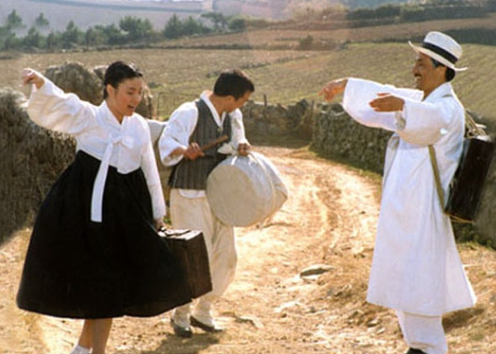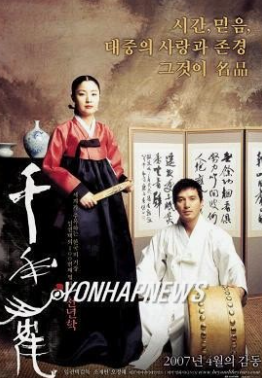Pansori – The Unique Voice of Korea, Carried by a Nation’s Soul
Pansori – The Unique Voice of Korea, Carried by a Nation’s Soul
There exists a voice in this world that goes beyond melody, beyond mere speech — a voice that cries, pleads, teaches, and heals all at once. This voice is Pansori, the singular vocal art form of the Korean people.
Pansori is not just music. It is lamentation and prayer, agony and hope. A lone singer, accompanied only by a single drummer, stands on a bare stage and delivers entire epics through voice and gesture. In each note lies the joy and sorrow of life, and the voice touches a place deep in the listener’s heart.
At the core of this sound is the Korean sentiment known as "Han" — a deep, layered emotion shaped by injustice, endurance, longing, and an unyielding will to survive. Yet Pansori is not confined to sorrow. Within its rhythms live laughter, satire, and vibrant life — a harmonious balance of "Han" and "Heung" (joyful spirit). Through this duality, Pansori offers a profound expression of what it means to be human.
In this age of speed and fragmentation, we present this sound to the world. It is not merely a cultural tradition, but a universal expression of the human spirit, worthy of being heard by all.
1. What Is Pansori? – Where Story and Song Become One
Pansori is a traditional Korean form of musical storytelling that blends narrative (pan) and song (sori). A single vocalist (sorikkun) portrays multiple characters while a drummer (gosu) provides rhythmic accompaniment with a barrel drum (buk).
With no stage props or additional performers, Pansori relies entirely on voice, rhythm, gesture, and emotion, invoking the imagination of its audience.
In 2003, UNESCO designated Pansori as a Masterpiece of the Oral and Intangible Heritage of Humanity, recognizing its cultural and spiritual value to humankind.
2. The Emotional Core of Pansori – The Art of "Han" and "Heung"
Pansori is a vessel for Han, a uniquely Korean emotion born of suffering, longing, and patience — yet rooted in resilience and dignity.
However, Pansori is far from heavy-handed. It weaves in Heung, a sense of joyful vitality, humor, and playfulness. The alternation between laughter and tears, lightness and gravity, creates a dynamic emotional experience that resonates with the essence of human life.
3. The Five Masterpieces – Stories That Transcend Time
Traditional Pansori is composed of five epic works, collectively known as the “Five Madang.” Each tale explores fundamental human themes through poetic expression:
-
Chunhyangga – Love and justice across social boundaries
-
Simcheongga – Filial piety and sacrificial devotion
-
Heungbuga – Kindness, reward, and moral balance
-
Sugungga – Satirical allegory with animal characters
-
Jeokbyeokga – Heroic battles and loyalty from Romance of the Three Kingdoms
Though rooted in Korean tradition, these works explore universal questions of morality, suffering, love, and resilience, making them relevant across cultures and generations.
4. The Singer and the Drummer – Artist and Philosopher
Pansori is sustained by the profound synergy between the vocalist and the drummer. The sorikkun must vividly embody various characters using only their voice, facial expressions, and hand gestures, while maintaining the rhythm and emotional flow of the piece.
The gosu does more than keep time — their drumbeats and timely exclamations (chuimsae) guide, uplift, and co-create the performance.
Together, they form not just a performance pair, but a spiritual and emotional dialogue that brings the story to life.
5. The Path to Voice – Earning the Sound Through Pain and Devotion
To “sing” in Pansori is not merely to vocalize. It means to "attain the voice" (deugeum) — a state of mastery reached only through years of sacrifice, solitude, and physical strain.
Traditionally, aspiring singers would retreat deep into mountains and forests, performing “san gongbu” (mountain practice) — vocal training amidst nature. They would sing until their voices cracked, spit blood-stained phlegm, and persevere through despair, all to find their true voice.
The sound they finally earn is not just musical skill; it is their entire life and soul made audible. When shared, this voice has the power to heal, move, and awaken. That is the sacred art of Pansori.
6. Pansori in Film – A Cinematic Voice of the People
Pansori has inspired some of Korea’s most significant cinematic works, further introducing this art to global audiences:
-
Seopyeonje (1993, dir. Im Kwon-taek)
A poignant portrayal of a family bound by Pansori, exploring art, pain, and sacrifice. This landmark film brought Pansori to the mainstream and earned international acclaim.
-
Hwimori (1994, directed by Lee Il-mok)
A drama centered on traditional music and the growth of a young pansori singer. This film explores the struggles and identity of artists preserving Korea’s musical heritage, highlighting the tension between tradition and change.
-
Beyond the Years (Cheonnyeonhak, 2007, dir. Im Kwon-taek)
A spiritual sequel to Seopyeonje, this film delves into the philosophical dimensions of Pansori, aging, and human longing.
These films show that Pansori is not only a cultural heritage, but a living, evolving expression of Korea’s collective consciousness.
7. Pansori Today – Tradition in Transformation
Contemporary Pansori artists are expanding the form, blending it with jazz, opera, hip-hop, theater, and digital media. Performers like Lee Jaram have reinterpreted classic narratives in modern theatrical formats, while others use social media and global platforms to connect with international audiences.
Pansori today stands at a crossroads — firmly rooted in history, yet boldly stepping into the future.
Closing Reflections – A Voice the World Must Hear
Pansori is not just Korea’s heritage — it is a profound expression of what it means to be human. It embraces suffering and transforms it into beauty. It sings not of perfection, but of truth — raw, vulnerable, and real.
This voice does not seek to impress; it seeks to touch.
It does not entertain; it enlightens.
It does not fade; it echoes across time.
We believe it is our responsibility to share this sound with the world — not simply because it is Korean, but because it belongs to the universal human story.
This is Pansori.
This is Korea.
And this is the voice of humanity.
by pre2w
View the Korean translated version







Comments
Post a Comment